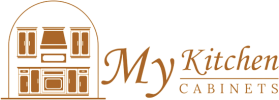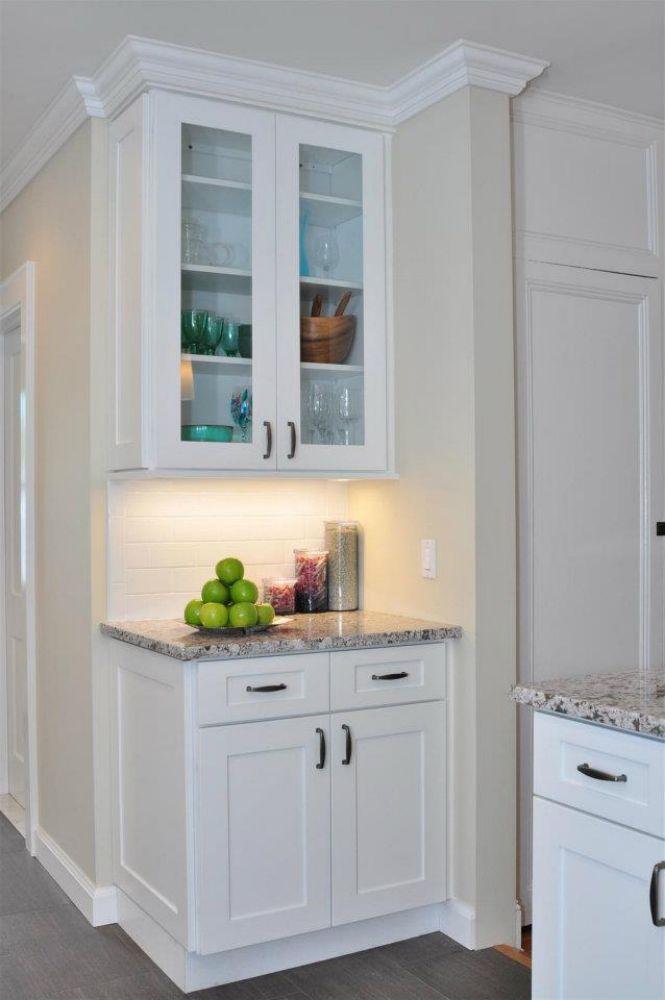Building a Greener Future: How to Choose Eco-Friendly Kitchen Cabinets for a Sustainable Home
Sustainability isn’t just a trend—it’s a conscious lifestyle choice that more homeowners are embracing every year. From solar panels to energy-efficient appliances, people are looking for ways to minimize their carbon footprint while creating healthy, beautiful living spaces. One of the most impactful ways to make your home eco-friendly is through your kitchen design—particularly when selecting kitchen cabinets.
At kitchen cabinets by My Kitchen Cabinets, we believe that style and sustainability should go hand in hand. Eco-friendly cabinetry doesn’t just reduce environmental impact—it also improves indoor air quality, enhances durability, and brings natural beauty into your home. Whether you’re remodeling or building from scratch, choosing sustainable cabinets ensures your kitchen reflects both your aesthetic values and your environmental responsibility.
Why Eco-Friendly Kitchen Cabinets Matter
Kitchens are often considered the heart of the home, but they can also be one of the biggest sources of environmental strain. Traditional cabinetry manufacturing often involves non-renewable resources, toxic glues, and finishes that release harmful chemicals.
Eco-friendly kitchen cabinets offer a healthier, more sustainable alternative. They are made with renewable or recycled materials, low-emission finishes, and responsible production methods that conserve energy and resources.
By choosing environmentally friendly options, homeowners can:
-
Reduce deforestation and waste.
-
Improve indoor air quality.
-
Support sustainable forestry and manufacturing.
-
Extend the lifespan of their cabinets through better materials.
Ultimately, eco-conscious cabinetry allows you to enjoy beauty, functionality, and peace of mind—knowing your kitchen contributes positively to the environment.
Understanding What Makes Kitchen Cabinets Eco-Friendly
Not all “green” claims are created equal. Understanding the key elements that make kitchen cabinets eco-friendly will help you make informed decisions during your remodel.
1. Sustainable Materials
Eco-friendly cabinets are often made from renewable resources like bamboo or responsibly harvested wood. Some also incorporate recycled or reclaimed materials, reducing demand for new lumber.
2. Low or Zero VOC Finishes
Volatile Organic Compounds (VOCs) are chemicals commonly found in paints, stains, and adhesives. These compounds release harmful gases that affect indoor air quality. Eco-friendly cabinets use low-VOC or water-based finishes that are safe and non-toxic.
3. Formaldehyde-Free Adhesives
Traditional wood composites and plywood often use adhesives containing urea-formaldehyde, which releases pollutants over time. Green cabinetry avoids these toxins by using alternative binders or solid wood construction.
4. Energy-Efficient Manufacturing
Sustainable manufacturers focus on reducing energy consumption, reusing waste materials, and minimizing emissions during production.
5. Longevity and Recyclability
Durability is also a form of sustainability. High-quality cabinets that last decades prevent unnecessary waste and resource consumption.
Choosing Sustainable Materials for Kitchen Cabinets
The foundation of eco-friendly cabinetry lies in the materials used. Below are some of the most environmentally responsible options available today.
1. Bamboo Cabinets
Bamboo is one of the most sustainable resources on Earth. Technically a grass, it grows rapidly—up to 24 inches per day—and regenerates without replanting. Bamboo cabinets are strong, moisture-resistant, and beautifully textured, making them a popular choice for modern eco-friendly kitchens.
2. Reclaimed or Salvaged Wood
Using reclaimed wood from barns, factories, or old furniture gives new life to existing materials. This option not only prevents waste but also adds rustic charm and character to your kitchen.
3. FSC-Certified Hardwood
The Forest Stewardship Council (FSC) certifies wood that’s responsibly sourced. Choosing FSC-certified wood ensures that forests are managed sustainably, protecting ecosystems and local communities.
4. Recycled Metal and Glass
Some contemporary kitchen cabinets feature doors or panels made from recycled aluminum or glass, offering a sleek, modern look while conserving resources.
5. Formaldehyde-Free Plywood or MDF
For those who prefer engineered wood products, select versions labeled as “NAF” (No Added Formaldehyde) or “CARB Phase 2 Compliant.” These meet strict air quality standards.
Selecting eco-friendly materials doesn’t mean sacrificing aesthetics—modern technology allows sustainable options to rival or surpass traditional materials in strength and appearance.
How Finishes and Paints Affect Sustainability
Cabinet finishes protect the wood and enhance appearance, but they can also be a major source of indoor air pollution if not chosen carefully.
1. Water-Based Finishes
Water-based stains and lacquers are far less toxic than oil-based ones. They dry quickly, emit fewer fumes, and produce a durable, long-lasting coat.
2. Natural Oils and Waxes
Linseed oil, beeswax, and tung oil are natural finishing options that highlight wood grain while maintaining eco-friendliness.
3. Low or Zero VOC Paints
When painting kitchen cabinets, opt for low- or zero-VOC paint brands. They contain minimal harmful chemicals and are safer for families, especially in closed environments like kitchens.
By prioritizing non-toxic finishes, you protect your health while supporting cleaner air inside your home.
The Role of Certifications in Eco-Friendly Kitchen Cabinets
To ensure authenticity in sustainability claims, look for third-party certifications that verify environmental responsibility.
1. FSC (Forest Stewardship Council)
Guarantees that the wood used comes from responsibly managed forests.
2. CARB Phase 2 (California Air Resources Board)
Sets strict limits on formaldehyde emissions in composite wood products.
3. Greenguard or Greenguard Gold
Indicates that the product has been tested for low chemical emissions, ensuring healthier indoor air quality.
4. LEED Certification
If you’re building or remodeling with green building standards, LEED-certified cabinetry can contribute points toward overall project certification.
5. NAUF/NAF Labels
“No Added Urea-Formaldehyde” (NAUF) or “No Added Formaldehyde” (NAF) labels signify safe adhesives and composite materials.
Cabinets carrying these certifications provide peace of mind that your investment aligns with sustainability principles.
Energy Efficiency in Cabinet Manufacturing
Sustainability extends beyond materials—it includes how the product is made.
Manufacturers like My Kitchen Cabinets prioritize energy-efficient production processes such as:
-
Using renewable energy sources like solar or wind.
-
Recycling sawdust and scrap wood for heat or secondary materials.
-
Minimizing transportation emissions through local sourcing.
-
Reducing waste by precision-cutting materials.
By supporting manufacturers that follow these practices, you indirectly contribute to global environmental preservation.
Eco-Friendly Hardware and Accessories
Hardware may seem like a small detail, but sustainable choices here also make an impact.
1. Recycled Metal Handles and Knobs
Opt for cabinet hardware made from recycled aluminum, brass, or stainless steel. These materials maintain durability while reducing mining demands.
2. Soft-Close, Energy-Efficient Hinges
High-quality hardware not only improves performance but also extends the lifespan of your cabinets by reducing wear and tear.
3. Plastic-Free Options
Avoid hardware or organizers made from non-recyclable plastics. Instead, choose wood, bamboo, or metal alternatives.
Every eco-conscious detail adds up to a more sustainable kitchen design.
The Benefits of Eco-Friendly Kitchen Cabinets
Switching to environmentally responsible cabinetry offers benefits that go beyond environmental conservation.
1. Healthier Indoor Air
Low-VOC finishes and formaldehyde-free materials significantly improve indoor air quality, reducing risks of respiratory irritation and allergies.
2. Long-Term Savings
Though the initial cost may be slightly higher, eco-friendly cabinets last longer, reducing replacement costs over time.
3. Ethical Production
By choosing sustainable cabinetry, you support companies that pay fair wages, reduce waste, and follow ethical manufacturing practices.
4. Enhanced Home Value
Eco-conscious design appeals to modern buyers. Homes with sustainable materials often have higher resale value.
5. Aesthetic Versatility
Eco-friendly cabinets come in various styles—from sleek modern bamboo to classic reclaimed wood—proving that sustainability can be beautiful.
How to Maintain Eco-Friendly Kitchen Cabinets
Maintaining your cabinets properly ensures they remain sustainable over their lifetime.
1. Use Natural Cleaning Solutions
Avoid harsh chemical cleaners that can damage finishes. Instead, use vinegar, baking soda, or mild dish soap.
2. Control Humidity Levels
Proper ventilation prevents warping or swelling, especially for solid wood cabinets.
3. Refinish Instead of Replace
If your cabinets show wear, consider sanding and reapplying eco-friendly finishes rather than replacing them.
4. Regular Hardware Check
Tighten screws and hinges periodically to prevent unnecessary damage.
These simple steps can extend the life of your eco-friendly cabinetry while keeping your kitchen healthy and beautiful.
How to Identify Greenwashing in Cabinet Marketing
As sustainability becomes more popular, some brands exaggerate their eco-friendly claims—a practice known as “greenwashing.” To avoid being misled:
-
Ask for certification proof (FSC, CARB, Greenguard, etc.).
-
Verify material composition—avoid “green” cabinets that use formaldehyde-laden MDF.
-
Research the manufacturer’s sustainability policies and energy use.
-
Check if finishes are water-based and low-VOC, not just labeled “eco-friendly.”
Choosing reputable companies like My Kitchen Cabinets ensures authenticity and transparency in every product.
How My Kitchen Cabinets Promotes Sustainability
At My Kitchen Cabinets, sustainability is part of our design philosophy. We craft eco-friendly cabinets that balance beauty, function, and environmental responsibility. Our commitment includes:
-
Using FSC-certified wood and CARB-compliant materials.
-
Offering water-based finishes and low-VOC paints.
-
Employing efficient, waste-reducing manufacturing processes.
-
Providing long-lasting products to reduce resource consumption.
We believe sustainability should be accessible to every homeowner, and our wide range of finishes, materials, and designs allows you to achieve your dream kitchen responsibly.
The Cost of Eco-Friendly Kitchen Cabinets
Many homeowners assume eco-friendly cabinetry is significantly more expensive—but that’s not always true.
While premium sustainable materials like bamboo or reclaimed wood can cost more upfront, the long-term benefits often outweigh the initial investment. You’ll save on replacement costs, enjoy better air quality, and support ethical manufacturing.
Additionally, as sustainable materials become more common, prices are becoming more competitive—making green design both affordable and practical.
Conclusion: Designing a Sustainable Kitchen for the Future
Choosing eco-friendly kitchen cabinets is one of the most impactful decisions you can make for a sustainable home. By focusing on renewable materials, low-emission finishes, and ethical production, you create a healthier living environment while contributing to the preservation of our planet’s natural resources.
At My Kitchen Cabinets, we combine style with sustainability, offering a wide range of options that meet eco-conscious standards without compromising beauty or functionality. Whether you prefer the sleek modern look of bamboo or the rustic warmth of reclaimed wood, our eco-friendly cabinetry ensures your kitchen aligns with your values and your vision.
Sustainability starts with small, intentional choices. By choosing responsibly made cabinets, you take a meaningful step toward a greener home—and a cleaner, healthier world for future generations.
FAQs About Eco-Friendly Kitchen Cabinets
1. What makes a kitchen cabinet eco-friendly?
Eco-friendly cabinets are made with sustainable materials such as FSC-certified wood, bamboo, or recycled products. They use low-VOC finishes and formaldehyde-free adhesives to ensure better air quality and minimize environmental impact.
2. Are bamboo cabinets really sustainable?
Yes. Bamboo grows rapidly and regenerates without replanting, making it one of the most renewable materials available. It’s also highly durable and moisture-resistant, perfect for kitchen environments.
3. Are eco-friendly cabinets more expensive than traditional ones?
Initially, they may cost slightly more due to responsible sourcing and manufacturing processes. However, their durability, health benefits, and long-term savings make them a worthwhile investment.
4. How can I tell if cabinets are truly eco-friendly?
Look for certifications such as FSC, CARB Phase 2, or Greenguard. Check if the manufacturer uses low-VOC finishes and formaldehyde-free adhesives, and review their sustainability policies.
5. Can eco-friendly cabinets be customized for my kitchen style?
Absolutely. My Kitchen Cabinets offers eco-conscious cabinetry in various styles, finishes, and configurations. You can choose sustainable materials without sacrificing design flexibility or aesthetics.
Read: Are inset kitchen cabinets worth the higher cost compared to overlay?
Read: What are the best ways to finance new kitchen cabinets?

